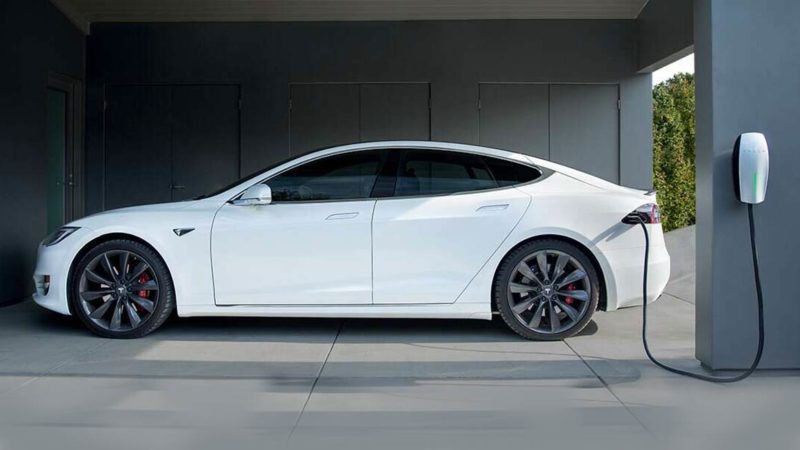The potential for electric vehicles as a part of the clean energy transition is more than just a form of zero emissions transport, and this is not lost on Tesla.
In fact, Tesla has done a complete turnaround on its previous position on vehicle-to-grid (V2G) technology (which was that according to CTO JB Straubel, V2G was not economically viable due to battery degradation).
We now learn that Tesla are already integrating vehicle-to-grid (V2G) technology in the electrical architecture of the Model 3.
That is hugely significant, not least because Tesla has already made some moves that suggest it is considering moving into the electricity market, having applied for a licence for undisclosed reasons in the UK.
It’s also significant because the Model 3 uses CCS2 plug standards, not CHAdeMO, which already supports V2G and is in use with the Nissan Leaf in Japan.
Instead of using an external inverter such as with the CHAdeMO standard, Tesla is using an internal converter which means that the outward flow of energy from the car can simply use a standard Type 1 or Type 2 AC plug.
According to a report from an electrical engineer who tore down a Model 3 for another car maker as reported by Electrek, the details are as follows:
“What I learned on reverse engineering the Model 3 charger, was that the design is fully bidirectional,” the engineer is quoted as saying.
“This means power can be converted from AC to DC the same way as the previous example, but also power can flow in reverse direction, coming from the battery and ending up on the AC side. This is known as DC to AC inverter, and when this technology is present in a vehicle, it is known as V2G (Vehicle to Grid).
“To complement this, the bidirectional design is replicated 3 times across the same PCB on the Model 3 charger. Another example of redundant design that assures a working process even if one of the circuits fails. Additionally, it is 3 phase design, so it can be used worldwide.”
Put simply, V2G technology allows electric cars to become a mobile battery that can store and discharge energy when and where needed. It has the potential to provide a curve-smoothing element to the ups and downs of grid demand, particularly as renewables play an increasing role in energy generation.
The inclusion of this technology in Tesla electric vehicles means that Tesla is future proofing its vehicles, which makes a hell of a lot of sense seeing as its battery researchers are also working towards a million mile battery to meet the lifespan of its cars.
But it also means a couple of other things, which to explain in more depth we ran past Jetcharge CEO Tim Washington, whose company is involved in getting V2G approved for the Nissan Leaf in Australia:
“What’s really interesting about the Tesla vehicle-to-grid thing is that they have pushed the inverter inside the on-board charger,” says Washington.
“This changes things because it does it inside the vehicle and [it means] you could potentially just use your home charger or a wall charger. It also pushes the cost [of including V2G or V2H] onto the car maker but drastically reduces the cost to set up V2G for end user,” he says.
Using a Type 2 charger on 3 phase power would allow Tesla’s system to offer a home up to 22kW at any one moment – more than enough even with the dryer, dishwasher and heater or air con blasting. Even using Tesla’s current maximum rate of 11kW would offer enough power for a home.
What effect this might have on the grid from a V2G perspective, “will depend on how many cars people start aggregating,” sayas Washington.
But it gets better than that: Washington believes that the inclusion of internal V2G tech in cars by Tesla will force a real step change for other car makers.
“It will push other car makers to feature match – essentially everybody who buys a car will have a massive battery with which they can supply to their house,” says Washington.
With the imminent reveal of Tesla’s million mile battery (once Battery Day can actually be nailed down to the dual online/live events proposed on Monday by Tesla CEO and co-founder Elon Musk) that is four or five times the size of a standard Powerwall, it is almost a no-brainer.
“It lowers the price of V2G and it’s aligned with the increased mileage battery. It means that overnight, everyone can go on off peak tariffs,” says Washington.
There are some technical issues that would need to be addressed for Tesla’s V2G tech, such as grid regulation and ensuring the proper certification and other approvals are obtained.
Given a vehicle is parked for much of the time, Washington thinks this will be bigger than most people realise.
“You follow the maths which is that the car is going to be used more as a battery rather than a mobility asset.”
“It’s not like a software update, it is definitely future proofing but it’s the biggest departure from Tesla’s original position which was never do V2G.”
Notably, it “points to the increased confidence Tesla has in their batteries,” Washington says.
“They’re saying we are happy for you to use this as battery storage,” because it can handle the increased usage.
“The writing is now on the wall.”
RenewEconomy and its sister sites One Step Off The Grid and The Driven will continue to publish throughout the Covid-19 crisis, posting good news about technology and project development, and holding government, regulators and business to account. But as the conference market evaporates, and some advertisers pull in their budgets, readers can help by making a voluntary donation here to help ensure we can continue to offer the service free of charge and to as wide an audience as possible. Thankyou for your support.
Update: It has come to our attention that the engineer who made the claim that Tesla is putting V2G technology in its cars may have mistaken a diode for a transistor, and therefore Tesla circuitry is not bidirectional. You can learn more about what this means here:

Bridie Schmidt is associate editor for The Driven, sister site of Renew Economy. She has been writing about electric vehicles since 2018, and has a keen interest in the role that zero-emissions transport has to play in sustainability. She has participated in podcasts such as Download This Show with Marc Fennell and Shirtloads of Science with Karl Kruszelnicki and is co-organiser of the Northern Rivers Electric Vehicle Forum. Bridie also owns a Tesla Model Y and has it available for hire on evee.com.au.

